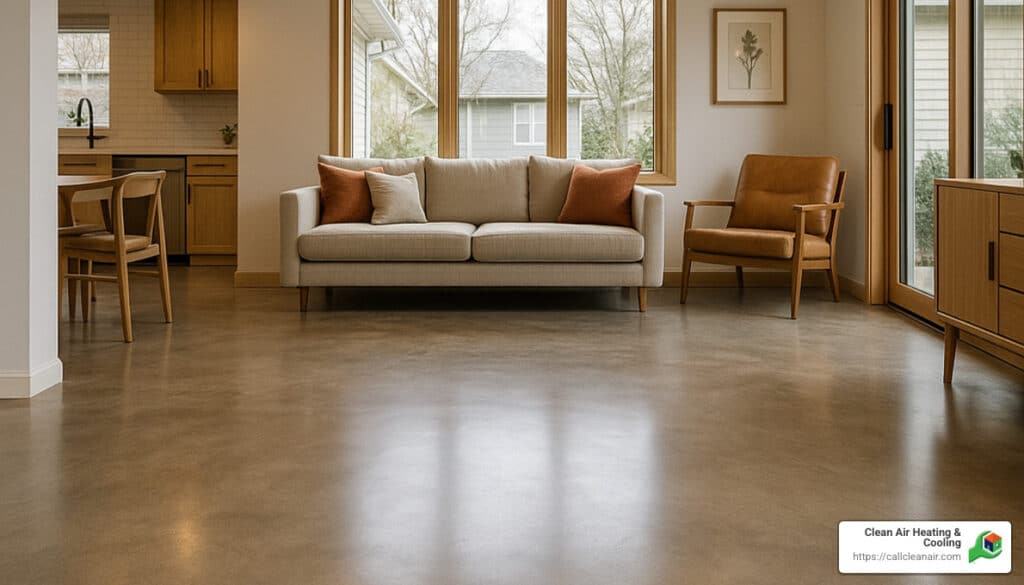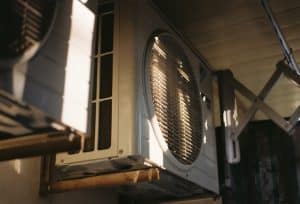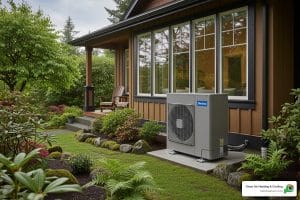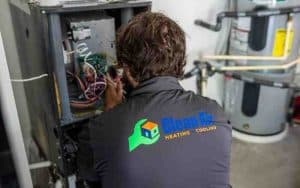The True Cost of Comfort: Understanding Heated Concrete Floor Expenses
Heated concrete floor cost typically ranges from $6 to $20 per square foot depending on the system type, with hydronic systems generally costing $6-$20 per square foot and electric systems ranging from $8-$15 per square foot. These costs usually don’t include new flooring materials.
- Hydronic systems: Better for whole-home heating, higher upfront costs
- Electric systems: Ideal for single rooms, easier installation
- Operating costs: $1-$5 per day for a 100-square-foot area
- Average installation: $4,128 (ranging from $1,700 to $6,600)
Imagine stepping onto your kitchen floor on a cold winter morning in Bellingham, only to be greeted by a gentle, inviting warmth radiating through your feet. This isn’t a luxury reserved for high-end homes – it’s an increasingly popular and energy-efficient heating solution that many homeowners in the Pacific Northwest are considering.
Radiant heated concrete floors offer unique benefits compared to traditional forced-air systems. By warming the thermal mass of concrete, these systems distribute heat evenly from the ground up, potentially reducing energy costs by 20-25% while eliminating cold spots and drafts.
I’m Colin Matei, owner of Clean Air Heating & Cooling, and I’ve helped countless homeowners throughout Whatcom County steer heated concrete floor cost considerations to find efficient, comfortable heating solutions for our region’s climate challenges.

Understanding Heated Concrete Floors
When we talk about heated concrete floors, imagine changing your concrete floor into a cozy, warm hug for your feet. Instead of the blustery blasts of traditional forced-air systems, radiant floor heating directly warms up the people and objects in the room. This isn’t just about feeling snug; it’s about creating a comfortable environment while potentially saving energy.
A contractor with a ton of experience in radiant heating once said, “If I were building a new home, I’d definitely install heated floors in every concrete room.” And why not? Many professionals swear by the long-term perks of this nifty heating method.
What is Radiant Floor Heating?
Radiant floor heating comes in two main flavors: hydronic systems and electric systems. Each has its own perks, applications, and, of course, heated concrete floor cost considerations.

Hydronic systems involve hot water flowing through PEX tubing nestled in the concrete. They need a boiler or water heater to keep things toasty. These systems are perfect for heating an entire home efficiently, especially in new constructions. While they might be a bit trickier to install, they reward you with lower operating costs in the long run.
On the flip side, electric systems use electric resistance cables or mats embedded in the concrete. They’re simpler to install, making them a great choice for retrofits or smaller spaces. Although they have higher operating costs, the initial installation is usually easier on the wallet. Perfect for individual rooms like bathrooms or kitchens, these systems don’t require a separate boiler or a mechanical room.
Both systems share the same basic principle: they transfer heat directly to the concrete, which then radiates warmth upward into your space. This heat transfer is what makes radiant floor heating both efficient and oh-so-comfy.
How Heated Concrete Floors Work
The magic of heated concrete floors lies in the thermal mass of the concrete itself. Concrete is fantastic at holding onto heat, making it an ideal partner for radiant heating. Picture this: a cubic yard of concrete holds as much heat as 2 tons of thermal mass, affecting how your heated slab changes temperature.
Once heated, your concrete floor becomes a giant, gentle radiator. The warmth spreads evenly across the floor and rises naturally, creating a snug environment from the ground up. Say goodbye to cold spots and drafts that often come with forced-air systems.
And here’s a cool (or should I say warm?) bonus: the thermal mass of concrete creates a “heat bank” effect. Even when the heating system takes a break, the concrete keeps radiating its stored warmth, maintaining cozy temperatures for longer. This is part of why heated concrete floors can be up to 25% more efficient than traditional systems.
Just ask one homeowner in Whatcom County who shared, “After installing heated concrete floors in our sunroom, we can enjoy the space year-round. Even on the chilliest days, it stays comfy, and our heating bills didn’t skyrocket as we feared.”
Heated Concrete Floor Cost Breakdown
When thinking about the total heated concrete floor cost, it’s important to consider several key components. You’re not just paying for materials. There’s also installation labor, how much it costs to run, and possible long-term savings.
Factors Influencing Heated Concrete Floor Cost
Several things can affect how much you’ll end up spending on a heated concrete floor system:
1. Size of the Area
Size matters! The bigger the space, the more you’ll need in terms of materials and labor. But, here’s a little secret: as the project size increases, the cost per square foot often goes down a bit. For a typical 2,400 square-foot home, installing a whole-home radiant hydronic floor system can set you back anywhere from $14,000 to $48,000.
2. System Type
Deciding between hydronic and electric systems is crucial. Hydronic systems have higher upfront costs but are kinder to your wallet in the long run with lower operational expenses. Electric systems are easier on the initial budget but can be a bit pricier to operate. Your choice should hinge on whether you’re warming up a whole house or just a cozy nook.
3. Labor Costs
Labor is a big chunk of the total heated concrete floor cost. In Washington state, the going rate for installing heated flooring is about $75 per hour, though this can vary. For every 1,000 square feet, expect around 12 hours of installation time.
4. Insulation Requirements
Insulation is your best buddy in this endeavor. Proper insulation ensures your system runs efficiently, with costs running about $1 per square foot for rigid foam under the slab. As the saying goes, “Insulation is the key to comfort — whatever route you take.”
5. Climate and Location
Our Pacific Northwest climate is perfect for radiant floor heating. The mild but damp winters in places like Bellingham make the consistent, dry heat of these systems very appealing. Homes in chillier microclimates within Whatcom, Skagit, or Snohomish counties might need more robust systems.
6. Permits and Inspections
Don’t forget the red tape! Most installations will require permits and inspections, be they electrical, mechanical, or plumbing, based on the system you choose.

Cost Comparison: Hydronic vs. Electric Systems
Here’s how hydronic and electric systems stack up in terms of costs:
Hydronic Systems come with an installation cost of $6–$20 per square foot. You’ll need additional equipment like a boiler, which can range from $3,200 to $9,000, along with manifolds and pumps. Operational costs are lower, generally $87-$220 per month for an entire house. Lifespan varies, with tubing lasting 30-50 years, and boilers around 10-20 years. These systems shine in whole-house heating and new builds.
Electric Systems have installation costs of $8–$15 per square foot. You’ll need dedicated electrical circuits and thermostats, and while they’re easier to install, they cost more to run, approximately $90-$250 per month for whole-house. They last between 20-35 years. They’re best for individual rooms, retrofits, and smaller spaces.
To put it in context, an average bathroom of about 40 square feet will cost between $300 and $700 for an electric system without new flooring, or between $240 and $800 for a hydronic system if you already have a boiler. Here’s a quote from Bob Tschudi, a well-known contractor: “For electric radiant heating materials, a good rule of thumb is $10 to $15 per square foot. Add $5 to $10 per square foot for installation.”
Additional Costs to Consider
Beyond the basic costs of putting in your heated floors, there are a few more expenses to think about:
Site Preparation for new construction is pretty straightforward, but retrofitting an existing space can add costs. Removing old flooring, ensuring the subfloor is up to snuff, and potentially raising floor heights might add $2-$5 per square foot.
Flooring Materials can range widely. Concrete can be left as-is, or you might choose something else. Here’s a quick rundown:
– Tile and Stone: Great with radiant heat, costing $11-$25 per square foot installed.
– Engineered Hardwood: Good option, running $8-$15 per square foot.
– Laminate: Works with proper underlayment, priced $3-$10 per square foot.
– Carpet: Less efficient, but doable with low pile options, at $3-$12 per square foot.
Insulation Upgrades are vital. Rigid foam insulation costs about $1-$2 per square foot, preventing heat loss downwards or to the side.
Zoning Controls can add comfort and efficiency but increase initial costs. Each extra zone usually adds $200-$500 but can save energy in the long run.
Maintenance Considerations mean you should plan for occasional system checks:
– Hydronic systems need annual boiler maintenance and periodic system flushing.
– Electric systems are mostly maintenance-free, but you might need to replace thermostats over time.
In the damp, chilly winters of Northwest Washington, we often suggest improved insulation packages for clients in Whatcom, Skagit, and Snohomish counties to get the most out of their radiant floors.

Pros and Cons of Heated Concrete Floors
As with any heating system, heated concrete floors come with advantages and disadvantages. Understanding these can help you determine if this heating solution is right for your home.
Pros of Heated Concrete Floors:
- Superior Comfort: Radiant floor heating provides even, consistent warmth without the hot and cold spots common with forced-air systems. The warmth rises naturally from the floor, creating what many describe as the most comfortable form of heat.
- Energy Efficiency: Radiant floor heating systems are 100% efficient because there is no heat loss through ductwork. They can operate effectively at around 84°F, compared to traditional radiators that require exceeding 167°F. This efficiency can translate to energy savings of 20-25% compared to forced-air systems.
- Healthier Indoor Environment: Unlike forced-air systems, radiant floors don’t circulate dust, allergens, or pathogens. As one contractor notes, “A big benefit [of installing a radiant floor heating system] is for allergy sufferers.”
- Silent Operation: No fans, no blowing air, no clicking radiators – radiant floor heating operates silently, enhancing the comfort of your living space.
- Invisible System: The entire heating system is concealed within your floor, freeing up wall space and eliminating visible radiators or vents.
- Long Lifespan: With proper installation, the heating components embedded in concrete can last 30-50 years, significantly longer than most forced-air furnaces (15-20 years).
- Increased Home Value: Radiant floor heating is considered a premium feature that can increase your home’s resale value, particularly in our climate here in Northwest Washington.
Cons of Heated Concrete Floors:
- Higher Initial Investment: The upfront heated concrete floor cost is typically higher than installing a traditional forced-air system.
- Installation Complexity: Especially for retrofits, installation can be complex and disruptive, potentially requiring raising floor heights.
- Slower Response Time: Due to the thermal mass of concrete, these systems take longer to heat up and cool down, typically 30-90 minutes depending on the system and floor covering.
- Floor Covering Limitations: While many flooring materials work with radiant heat, some (like thick carpeting) can reduce efficiency.
- Professional Installation Required: Unlike some heating solutions, DIY installation is generally not recommended for radiant floor heating due to the complexity and potential safety issues.
- Retrofit Challenges: Adding radiant heating to an existing home can be more complicated and expensive than incorporating it during new construction.
A homeowner in Bellingham who recently had us install a hydronic system shared: “The initial cost gave us pause, but after one winter with our heated concrete floors, we’re convinced it was worth every penny. Our home feels more comfortable than ever, and our heating bills actually went down despite adding our previously unheated basement to the system.”
How to Save on Heated Concrete Floor Costs
While the initial investment of heated concrete floors might seem daunting, there are clever ways to reduce the overall heated concrete floor cost without sacrificing comfort.
Heating Key Areas Instead of the Whole House
Instead of warming every square inch of your home, focus on areas where a cozy floor matters most. Picture this: stepping out of the shower onto warm bathroom tiles, or enjoying a toasty kitchen floor as you sip your morning coffee. By targeting specific spaces such as bathrooms, kitchens, living rooms, and basements, you can enjoy the benefits while keeping costs in check. This way, you can concentrate your investment where it counts, achieving comfort without overspending.
Choosing the Right System for Your Needs
Choosing the right heating system is like picking a puppy—it’s all about the right fit for your lifestyle. Electric systems, with their easier installation, are perfect for small areas or single rooms. Their flexibility makes them a smart choice for existing homes where you might just want to warm up a chilly bathroom or a cozy nook. On the other hand, hydronic systems are the heavyweight champions for whole-home heating, especially in new builds. They might have higher upfront costs, but their energy efficiency over time can make them a great long-term investment.
Sometimes, a hybrid approach—using hydronic for main areas and electric for spots like bathrooms—offers the best of both worlds.
Tax Credits and Rebates
Who doesn’t love a good deal? Keep an eye out for tax credits and rebates to help trim down your heated concrete floor cost. Federal and local incentives often support energy-efficient upgrades, making your investment even more appealing. Check with local utilities in Whatcom, Skagit, and Snohomish counties for any rebates. And remember, Clean Air Heating & Cooling is here to guide you through finding these hidden savings opportunities.
DIY Site Preparation
While we strongly recommend leaving the installation to the pros, you can still lend a hand—or a hammer. DIY site preparation can lower labor costs. Consider tackling tasks like removing old flooring, handling the demolition, preparing subfloors, and taking care of debris disposal. Just make sure to coordinate with your installation team to ensure everything is done correctly.
Evaluating Different Systems for Cost Savings
Balancing your budget with your home’s needs is key. For new homes, embedding hydronic systems during construction saves both time and money down the line. For retrofits, electric systems tend to be the go-to due to their simpler installation process and lower impact on existing structures. If budget constraints are an issue, consider a phased implementation—starting with laying the groundwork for a hydronic system and adding the heating components later.
Maximizing Efficiency with Insulation and Zoning
Once your system is in place, maximize its efficiency to keep those energy bills happy. Insulation and zoning are your best friends here. Install robust insulation beneath and around your slab to prevent heat from escaping. In Northwest Washington’s climate, this is especially important to maintain your desired comfort level.
Zoning takes your heated floors to the next level. By using multiple thermostats and controlling which areas are heated—and when—you can direct warmth only where you need it. This can reduce energy use by a significant margin and make your home a model of efficient comfort.
With a bit of planning and smart choices, you can enjoy the luxury of heated concrete floors without breaking the bank. And here at Clean Air Heating & Cooling, we’re always ready to help you find the best path to cozy toes and a happy wallet.
Frequently Asked Questions about Heated Concrete Floor Cost
Is Radiant Floor Heating Cost-Effective?
Absolutely! Radiant floor heating is a smart investment, particularly when you look at it over the long haul. Yes, the initial heated concrete floor cost might be higher than traditional systems, but the benefits are worth it. These systems are about 20-25% more efficient than forced air, thanks to their ability to heat a room evenly without losing energy through ductwork. With fewer moving parts, maintenance is a breeze, and the components last between 30 to 50 years, outliving your average furnace by a long shot. Plus, you can heat only the areas you use with zoning, which slashes energy consumption.
One happy homeowner from Skagit County mentioned, “Our radiant floor heating system paid for itself within seven years through energy savings compared to our old forced-air system. Plus, the comfort level is incomparable.”
For the best bang for your buck, consider installing radiant floor heating during new construction or major renovations. Even in retrofits, especially in heavily used areas, you’ll likely see a solid return on your investment.
Can Heated Concrete Floors Heat an Entire House?
Definitely! Heated concrete floors are not just for cozy bathrooms or kitchens; they can comfortably heat your entire house. They provide even heat distribution, so no more cold spots or drafts. Hydronic systems shine for whole-house heating, offering an economical solution on a per-square-foot basis as the size of the system increases.
For homes in our chilly Northwest Washington climate, we often suggest a hydronic system with multiple zones. This setup allows for customized comfort throughout the house. A Bellingham resident proudly shared, “We installed heated concrete floors throughout our new home three years ago. It maintains perfect comfort even during the coldest days, and guests always comment on how comfortable our home feels compared to forced-air heated homes.”
How Long Do Heated Concrete Floors Last?
One of the biggest perks of radiant floor heating is its impressive longevity. Hydronic systems boast PEX tubing that lasts between 30 to 50 years. Electric systems can go strong for 20 to 35 years. Components like boilers do need a bit more attention, usually requiring replacement after 10 to 20 years, while thermostats and controls might need a refresh every decade or so.
This long lifespan makes the initial heated concrete floor cost seem reasonable over time. Many systems come with warranties of 25 years or more, showing just how durable they are. A client in Snohomish County mentioned, “The hydronic system in my parents’ home has been operating flawlessly for over 25 years with just routine maintenance on the boiler. That kind of longevity makes the initial investment seem quite reasonable.”
What Type of Floor Covering Works Best with Heated Concrete?
While polished or stained concrete can be beautiful on its own, many homeowners opt for additional flooring materials that complement radiant heat. Ceramic or porcelain tiles and natural stones like marble or granite are excellent heat conductors. Engineered hardwood and luxury vinyl tile perform well, too. For those cozy bedroom vibes, low-pile carpet with heat-transfer padding works, but avoid thick carpeting or materials not rated for radiant heat.
The choice of flooring affects both the system’s efficiency and how quickly your floors warm up. In the Pacific Northwest, we often suggest using tile in moisture-prone areas like bathrooms and kitchens, engineered hardwood in living spaces, and low-pile carpet or cork in bedrooms. These materials are specifically chosen for their compatibility with radiant heat.
What Maintenance Does a Heated Concrete Floor Require?
Good news! Heated concrete floors are low-maintenance. Hydronic systems require annual boiler check-ups, periodic system pressure checks, and occasional flushing every 5 to 10 years. Don’t forget to check those zone valves and controls during your routine HVAC maintenance. Electric systems are virtually maintenance-free; just test or replace thermostats occasionally.
For the concrete itself, follow the care suitable to your chosen finish. Polished or sealed concrete may need resealing, while floors with overlays follow the flooring manufacturer’s care instructions. At Clean Air Heating & Cooling, we provide maintenance plans to ensure your system runs optimally, keeping homes across Northwest Washington cozy for years to come.
How Energy Efficient Are Heated Concrete Floors?
Radiant floor heating systems are stars in the energy efficiency arena. They operate at lower temperatures compared to traditional systems, typically between 85-125°F for hydronic systems, compared to 140-160°F for baseboard radiators. Heat stays near the floor where you need it, avoiding ceiling-dwelling heat loss. Plus, skipping ductwork means no energy is wasted there.
Studies show radiant floor heating can be up to 30% more efficient than forced-air heating and about 15% more efficient than baseboard heating. One Bellingham homeowner noted, “After switching from forced air to radiant floor heating, our winter utility bills dropped by about 22%. The system paid for itself much faster than we expected through these savings.”
For more detailed information about the benefits and cost-effectiveness of radiant floor heating, visit Energy Efficient Floor Heating.
Conclusion
Heated concrete floors might seem like a big investment at first, but for homeowners in Northwest Washington, they’re a smart choice that can pay off in the long run. While the initial heated concrete floor cost can be higher than more traditional heating systems, the benefits they offer make them a popular option for both new builds and home makeovers.

Choosing the right system is key. Hydronic systems are great for whole-home heating and electric systems are perfect for smaller spaces. It’s all about what fits your needs and budget. Consider not just the upfront costs, but also how much you’ll save on energy and maintenance over time.
And speaking of comfort, nothing beats the cozy, draft-free warmth of radiant floor heating, especially when you know you’re saving up to 20-30% on energy costs compared to traditional heating methods.
Professional installation is crucial. The success of your system depends on proper design and expert setup. At Clean Air Heating & Cooling, we’re here to help. With our 25% utility savings guarantee, we’re confident in the efficiency and performance of our systems.
Whether you’re starting fresh with a new build, renovating your space, or just want to make your home cozier, we can guide you through understanding the heated concrete floor cost to find the perfect solution for your needs.
Radiant floor heating isn’t just a luxury—it’s a practical, efficient way to stay warm in the Pacific Northwest. Ready to explore heated concrete floors for your home? Our friendly team is here with free consultations and custom estimates. Visit Clean Air Heating & Cooling to learn more.





